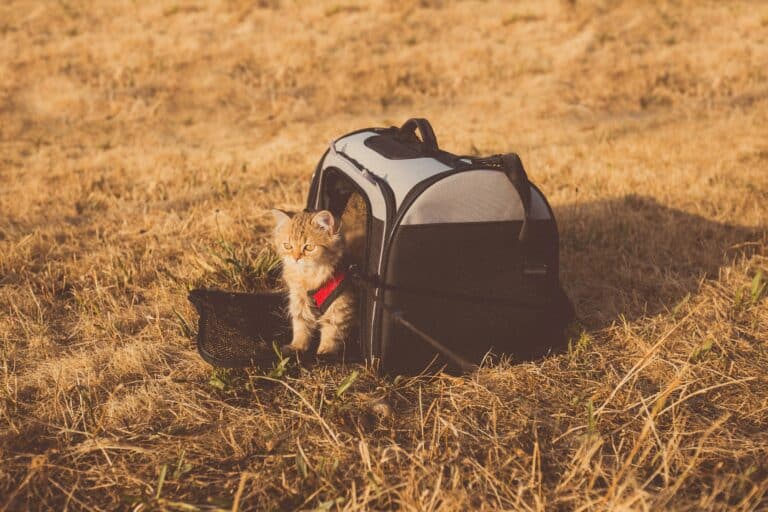
Dogs are wonderful travelling companions. Plenty of people bring their pooches on the road, taking advantage of dog-friendly caravan parks and campgrounds around Australia. So many new smells to discover and trees to lift a leg on! But can you travel with a cat? And would you want to? Cats and caravans do not typically mix. Cats are generally more territorial than dogs and hopeless homebodies. But it is possible to travel with a cat with the right gear and a lot of planning. Here are our tips for getting your feline fur baby on the road.
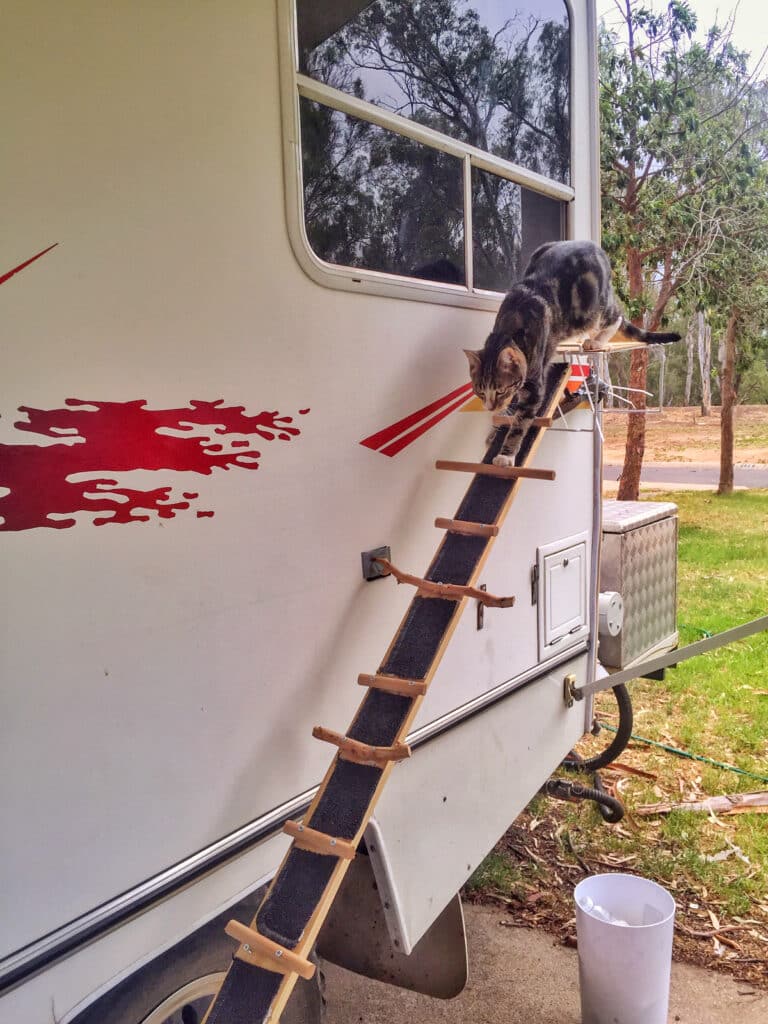

©️Sam Rees-Jones
Preparation is key
You can’t just to whistle to a cat, get them to hop on the back seat and take off. Cats need lots of coaxing and time to adjust to their new environment. If you can, start when they are a kitten, as cats are more adaptable when they are young. You need to introduce your cat to their new mobile home slowly. Begin by putting some of their toys and bedding inside your caravan or camper at home and enticing them inside with treats. Open cupboards and let them explore at their own pace. It’s important your pet can pick up their scent – and yours – in this new and unfamiliar place. Use a calming pheromone spray like Feliway if you need to ease your cat’s anxiety.
When you cat becomes more comfortable in the space, start feeding them in your RV and introduce kitty litter, toys and play time. Have a trial sleepover in your RV at home so you can abort if your cat becomes distressed. If you have a campervan or motorhome, gradually add in small drives to get them used to the camper in motion. Begin by just starting the engine and progress with taking small drives. If you have a caravan, slowly get them used to travelling in the car.
Train like a ninja
Your cat is not going to be able to spend an entire big lap indoors, nor would they want to. They need to adapt to being on a lead – like a dog – and in a carry backpack. A lead will give them the freedom to roam safely outside without doing a runner and will also protect native wildlife. A harness is your best bet because cats can be Houdinis when it comes to wriggling out of collars! For walks and other outings in public, they will also need to be comfortable in a cat backpack. Choose one that’s breathable and claw resistant with good peep holes and enough room to stand up in and stretch out. The backpack can also double as an in-car transport carrier and even a bed. Some, like the Hi-Dream Pet Backpack, have an expandable carry pouch to give your pet more room when the carrier is on the floor.
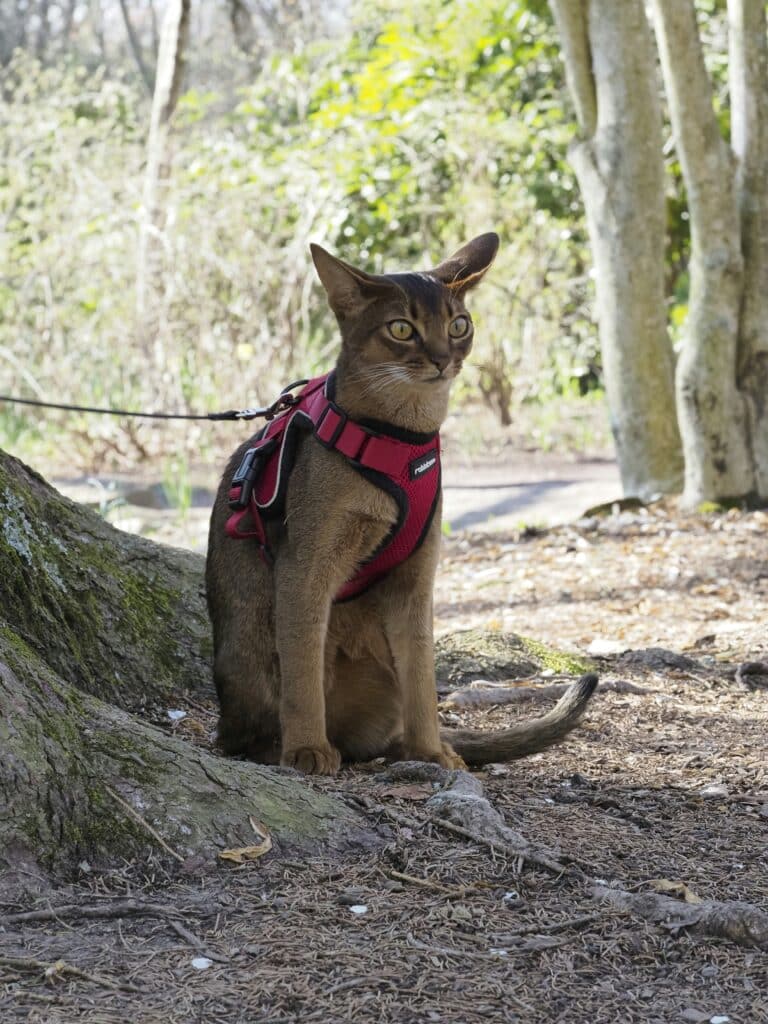
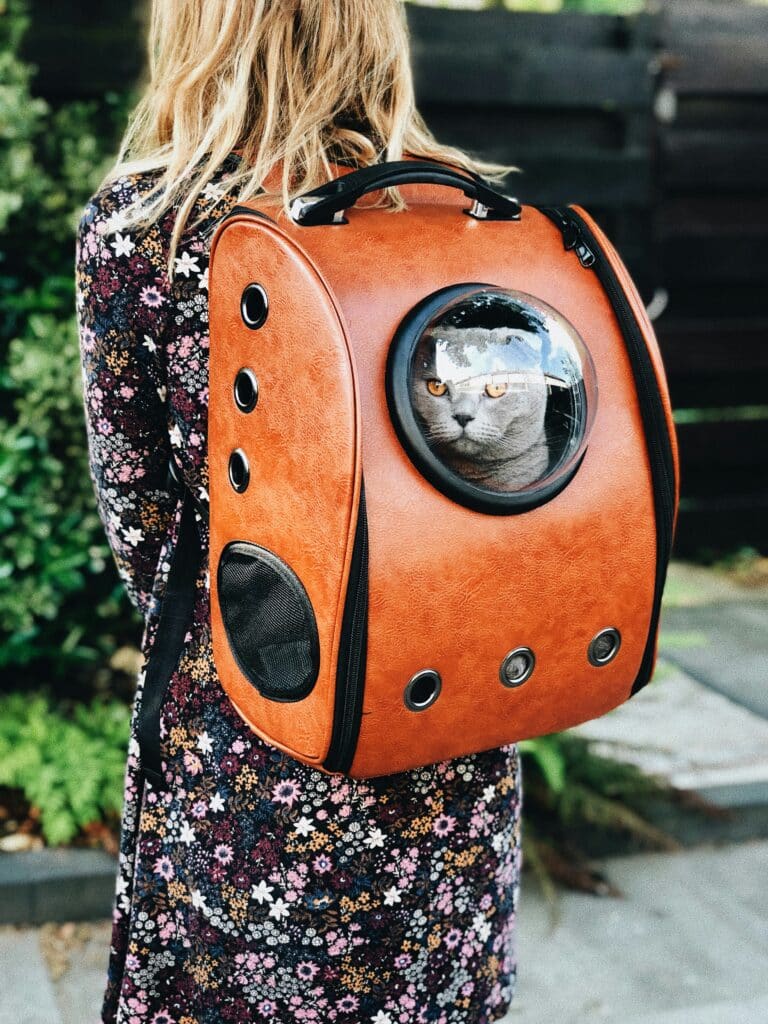
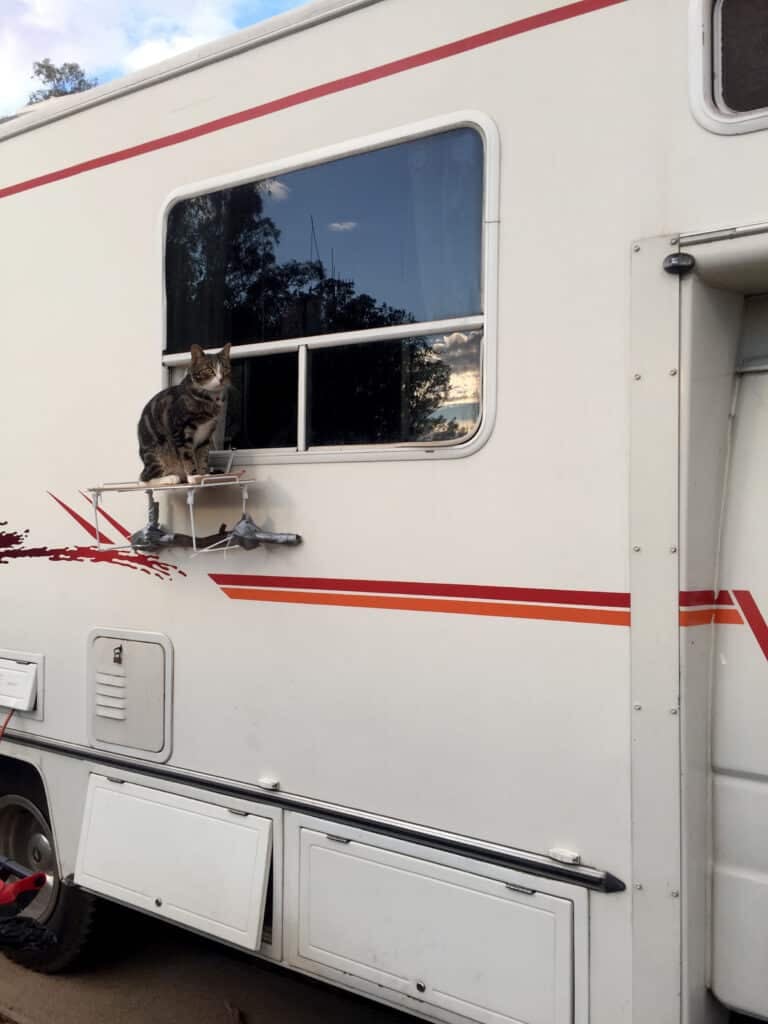

It’s essential that your cat gets used to the harness and backpack before you set off on your first trip. Use them at home first and on short walks around your neighbourhood. Put the backpack next to your cat’s regular bed and food and entice them in with treats. Give them lots of positive reinforcement when they venture inside. Eventually the backpack will become their safe place.
Create space for a catnap
Your cat needs their own space to retreat and feel safe. Set up a bed where they can enjoy some alone time. That might be in the under-bed storage area in your caravan – you can even cut out an access hole in the cabinetry. Alternatively, is there are spare cosy cupboard you can convert, recognising that space is, of course, a premium in an RV? Once your kitty has found their place you also need to find a spot for their kitty litter and food and water bowls. Choose a portable litter tray with a lid for easy transport and to save any cat-astrophic spills in transit. Inside the shower is a good out-of-the-way place to stash your cat’s business, if you have one. Put their bowls somewhere accessible where they won’t be knocked over by any humans making their own toilet dash during the night.
Invest in stick-on scratch mats. These cheap adhesive mats attach to almost any surface and will not only save your furniture and flyscreens from being scratched to pieces, but are also much more compact than a traditional scratching post. Some travellers create cat runs along their overhead cabinets to keep their fur baby active and stimulated. If you don’t have the space for that, consider investing in an outdoor cat enclosure and run where your kitty can exercise and play without getting up to mischief. A long lead with a stake is also useful.
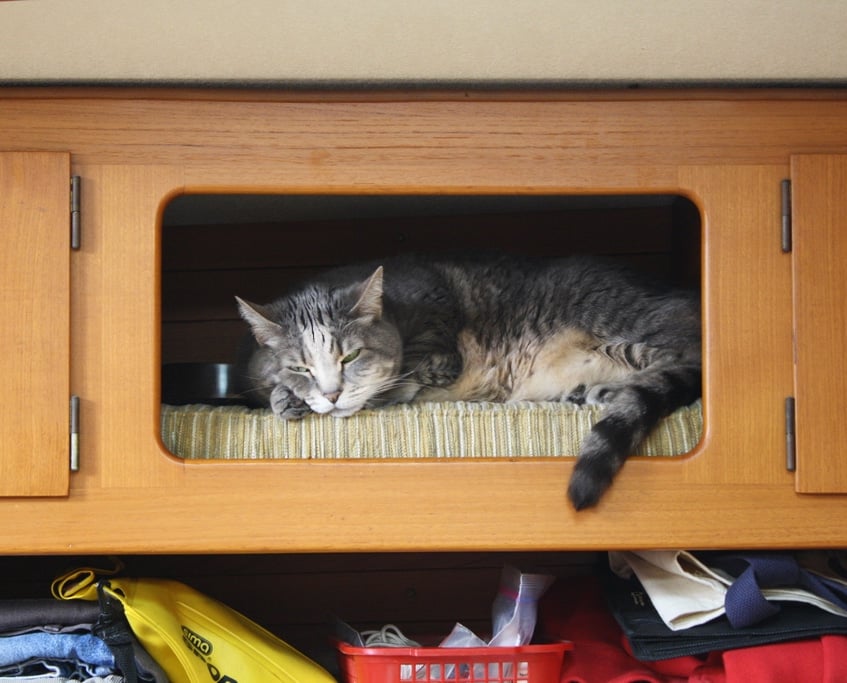
For safety’s sake
For the sake of protecting wildlife and your cat, don’t let them roam free, especially at night. Also keep your eyes on your pet when they are outdoors to prevent them from eating any poisonous plants or grasses or deadly 1080 baits, which are widely, and controversially, used across Australia to control pests. Make sure your pet is microchipped so if the unthinkable happens and they take off, you have more chance of finding them. You can also invest in a GPS cat tracker so you can keep tabs on your tabby in real time, 24/7.
Don’t leave you cat unattended in your RV for long periods, especially in hot weather, and ensure they always have access to enough food and water. It’s a good idea to refrain from feeding you cat immediately before or after a long drive. Make sure their vaccinations are up to date, always travel with an extra supply of pet medications in case you can’t replenish them on the road, and be vigilant checking for ticks. Also be mindful of snakes and other potential dangers.
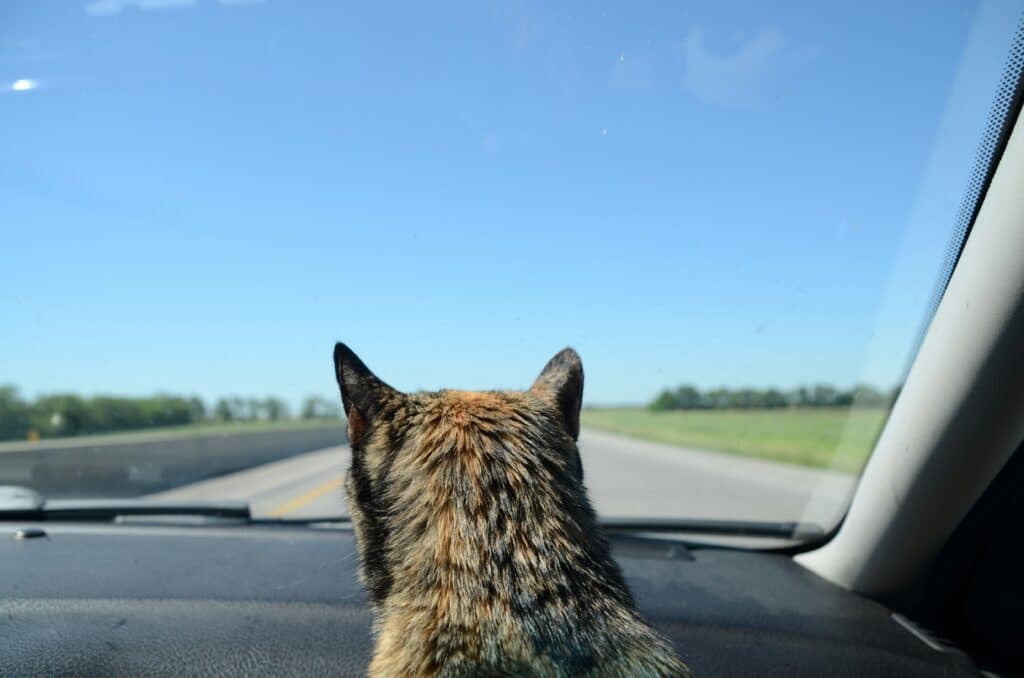
Puss off!
There are some places cats were never meant to go. National parks are pet-free zones to protect our native flora and fauna. Respect this, and other pet no-go areas, by finding alternative arrangements for your cat. If you are planning a day or overnight trip, organise someone to mind your cat. Enquire at the caravan park or town vet about local pet sitters or ask a fellow traveller if they can mind your cat (you may be able to reciprocate). Alternatively, join a Facebook travelling-with-pets group where you can connect with like-minded people who may be able to pitch in and help.
If you can’t find a free sitter, you may need to pay for one. Mad Paws is a national community of pet sitters with a vetted database of more than 55,000 minders who will take care of your cat for a few hours or a few days, for a fee. Rates start at $16 a night, fully insured, and you can meet your pet sitter before you commit. Of course, cats aren’t as amenable as dogs, and leaving them with a stranger depends on the temperament of your pet.
Purrfect holiday companion?
A cat isn’t going to play with you at the beach while you throw a tennis ball, or curl up under at your feet while you’re cooking the barbecue, so you really need to consider if the companionship outweighs the hassle. Do you really want to travel with a cat, or are they better off sleeping in the windowsill with a house sitter at home?
Let us know your thoughts on travelling with a cat in the comments. If you’ve ever taken a cat on the road, we would love to hear from you!










